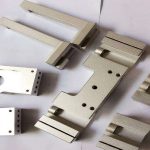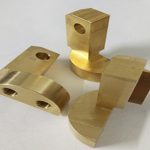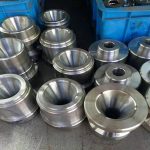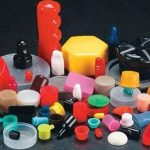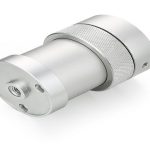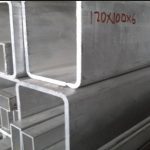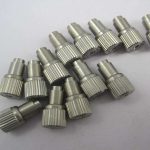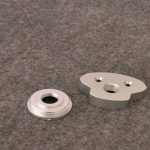Despite purchasing a new bending machine, we still encountered problems, such as being unable to maintain repeated angles. Our tool is a new tool, and precision drilling really helps us shorten the installation time. But achieving a consistent angle is a headache.
So, does the material have a lot to do with it? If so, which type or grade is better to use? Today, the editor of Xianji.com takes everyone to understand that the poor effect of the bending machine is really related to the material?
When talking about bending machine brands and models, we all have personal preferences. Whether it is electric, hydraulic or servo-hydraulic drive systems, their working methods may be different, but they all have the repeatability of a micrometer.
Bending machine manufacturers do offer proprietary options that may affect specific applications, but this is subtle. In terms of basic functions, most major brand machines are as good and precise as other machines. Tooling can be said to be the same thing. If you stay in a specific group, such as precision grinding or planer style, and match the work you need with a given type of tool, you can achieve excellent results.
It can be said with certainty that if you want to get the best results on a modern bending machine, you need to fine-grind the tool, which has a manufacturing tolerance of ±0.0004 to ±0.0008 inches, and has the same height and tool center. The planer tool has a tolerance of ±0.005 inches over 10 feet, which makes it difficult to use in a staged press brake setup.
Even then, tools and bending machines should not be fully used. Never use any machine to the maximum, but make the best use of it. For safety reasons, it is best that the tonnage of the bending machine and the mold is at least 20% more than that required for the job.
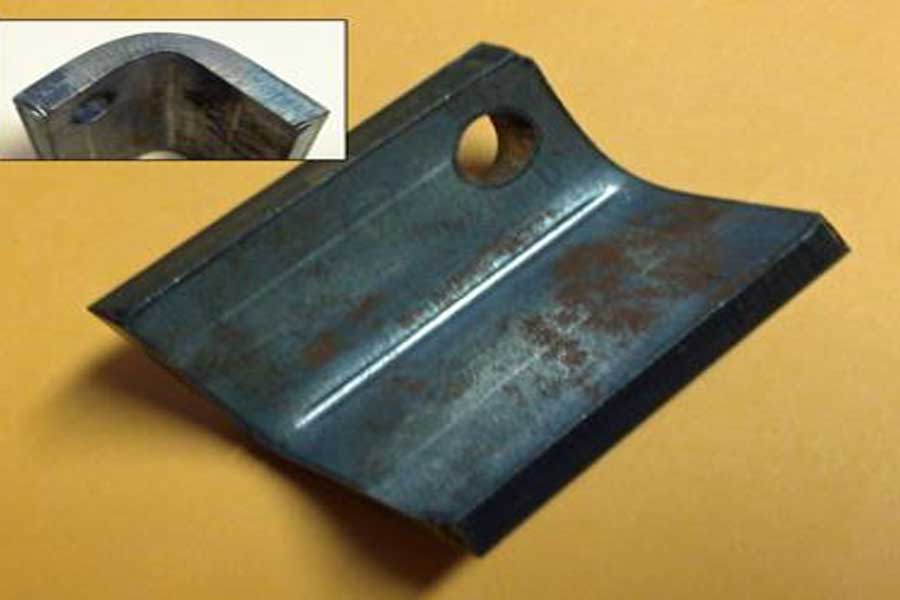
Thickness and tension changes
Even if new bending machines and molds can achieve high accuracy, you still need to consider material differences, especially if your tolerance requirements are strict. Take 10 ga hot rolled steel as an example. Its nominal thickness is 0.1345 inches, but the range is 0.1285 to 0.1404 inches. The material thickness can also vary across the width of the board. In a rolling mill, the rolls are skewed at the center, making the plate or plate thicker in the center and thinner near the edges. This can cause a thickness difference of a few thousandths of an inch. Assume that the thickness varies 0.007 inches from edge to center. This is enough to cause the bending angle of each workpiece to vary by as much as 5 degrees.
All materials also have an ultimate tensile strength (UTS) tolerance. Suppose you are using 10-ga. ASTM A36 steel. The UTS tolerance range has been 58 KSI all the way to 80 KSI.
Hot rolled and cold rolled
There are some very basic differences between hot rolled and cold rolled steel. Hot-rolled steel is rolled at a high temperature, and a large amount of residual stress may be generated due to uneven cooling. Residual stress will exacerbate the differences between parts.
Cold rolling mills usually re-roll the steel at room temperature, and then anneal or temper the steel to further transform the steel. Compared with hot-rolled pickled and oiled steel, this process results in a higher surface finish of cold-rolled steel. Please also note that cold-rolled sheet is usually a low-carbon product, usually in an annealed state, and is softer than hot-rolled steel, which is generally stronger.
Effect on radius and bend deduction
Suppose we want to form a “perfect” bending radius, that is, a bending radius with the same material thickness as the internal bending radius. This can result in stable, repeatable bending, but you still need to consider the variability of the material.
First, let us consider the change in material thickness. Similarly, 10-ga materials range from 0.1285 to 0.1404 inches; that is a difference of 0.0119 inches. When we perform bending calculations, different thicknesses will bring us different bending derivations (BDs). Running calculations for a material with a thickness of 0.1285 inches results in a BD of 0.222 inches. Performing the same calculation on a material with a thickness of 0.1404 inches, the BD obtained is 0.243 inches, a difference of 0.021 inches.
The previously described changes in tensile strength also affect the internal bending radius. In the air form, the higher the tensile strength of the material, the larger the floating radius will be. Change the radius, then change the BD.
Small radius and sharp bend
If the punch radius used is too small for the application, you can enter the “sharp” field. These punches exert a lot of force on a small area. Depending on the length of the bend, your punch may start to pierce the surface of the material.
Generally, when you try to make the inner bend radius less than 63% of the material thickness, the bend becomes sharp. You can recognize a sharp bend by the obvious crease in the center of the inner bend radius (see Figure 1). Try as much as possible, you can’t put a small inner radius in this sharp bend; the narrow punch just goes deeper into the bend line.
Sharp bends will amplify all the effects of bending variables, including the bending angle, which will then affect the measured linear dimension of the bend. The operator forms a bad (out of tolerance) bend angle, and then makes the situation worse by measuring these bad bend angles.
The quality of the sheet will also affect the consistency and appearance of the product. The rolling of steel on a rolling mill produces material grains in the rolling direction, and these grains affect the behavior of the plate or plate. Cheaper materials tend to contain more impurities, larger grain sizes, and are therefore more susceptible to changes in bending angles. Grain characteristics also vary by plate and batch (see Figure 2).
When bending a small internal bending radius (tool parallel to the direction of the grain) along the longitudinal direction of the material grain, it will increase the possibility of cracks on the curved outer surface. This in turn will cause the angle between each worksheet and between each batch to change, especially when you bend a lot.
Nesting complications
Similarly, thin steel sheets and steel sheets have crystal orientation, and cold-rolled steel shows more obvious directionality than hot-rolled steel. According to the relationship between the bending line and the grain, the effect on the bending angle will be different.
You may be dealing with parts cut from an optimized nested layout, in which you can place as many parts as possible on the drawing regardless of the grain orientation. If no two parts maintain the same relationship between the texture and the bending line, it may make the work of the bending operator almost impossible.
Consider small batch models
Now, the usual disclaimer is: the bending problem comes from many variables, without a complete picture, it is difficult to pinpoint the root cause. In any case, I believe you may be right: the problem may be related to the material, including the order in which the material flows through the brake department. You mentioned the need to maintain the overall flow or overall pull of the environment.
One-piece pulls can be used in many places in the manufacturing industry, but the bending machine department of your store may not be the best place to apply this concept. Even with the new machines and tools you describe, in a one-piece environment, operators must frequently disassemble and replace tools. All these manual settings add another variable to an already highly variable process. You might consider replacing single-piece pulls with small batch models. This can reduce the number of settings and the consistency of parts without the trouble and expense of mass production.
Link to this article: Is the poor effect of the bending machine related to the material?
Reprint Statement: If there are no special instructions, all articles on this site are original. Please indicate the source for reprinting:https://www.cncmachiningptj.com/,thanks!
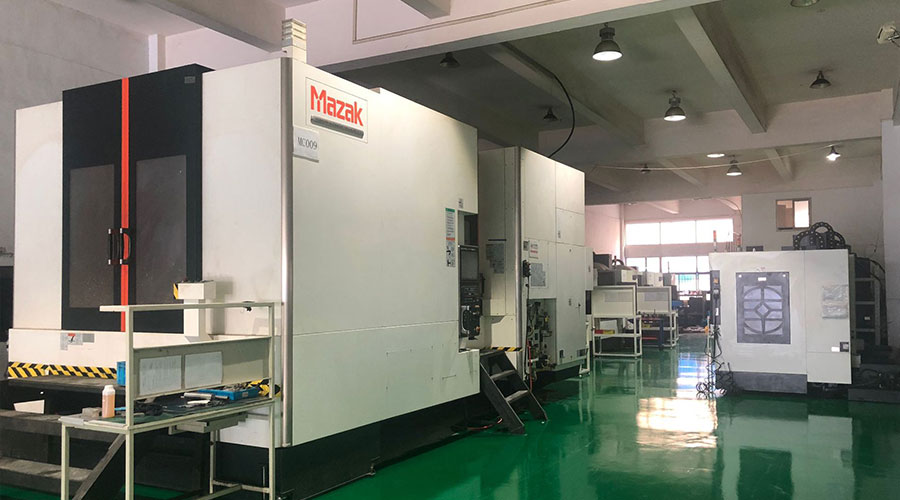 3, 4 and 5-axis precision CNC machining services for aluminum machining, beryllium, carbon steel, magnesium, titanium machining, Inconel, platinum, superalloy, acetal, polycarbonate, fiberglass, graphite and wood. Capable of machining parts up to 98 in. turning dia. and +/-0.001 in. straightness tolerance. Processes include milling, turning, drilling, boring, threading, tapping, forming, knurling, counterboring, countersinking, reaming and laser cutting. Secondary services such as assembly, centerless grinding, heat treating, plating and welding. Prototype and low to high volume production offered with maximum 50,000 units. Suitable for fluid power, pneumatics, hydraulics and valve applications. Serves the aerospace, aircraft, military, medical and defense industries.PTJ will strategize with you to provide the most cost-effective services to help you reach your target,Welcome to Contact us ( [email protected] ) directly for your new project.
3, 4 and 5-axis precision CNC machining services for aluminum machining, beryllium, carbon steel, magnesium, titanium machining, Inconel, platinum, superalloy, acetal, polycarbonate, fiberglass, graphite and wood. Capable of machining parts up to 98 in. turning dia. and +/-0.001 in. straightness tolerance. Processes include milling, turning, drilling, boring, threading, tapping, forming, knurling, counterboring, countersinking, reaming and laser cutting. Secondary services such as assembly, centerless grinding, heat treating, plating and welding. Prototype and low to high volume production offered with maximum 50,000 units. Suitable for fluid power, pneumatics, hydraulics and valve applications. Serves the aerospace, aircraft, military, medical and defense industries.PTJ will strategize with you to provide the most cost-effective services to help you reach your target,Welcome to Contact us ( [email protected] ) directly for your new project.
Link to this article:Is the poor effect of the bending machine related to the material?
Reprint Statement: If there are no special instructions, all articles on this site are original. Please indicate the source for reprinting:Tungusten,Thanks!^^

